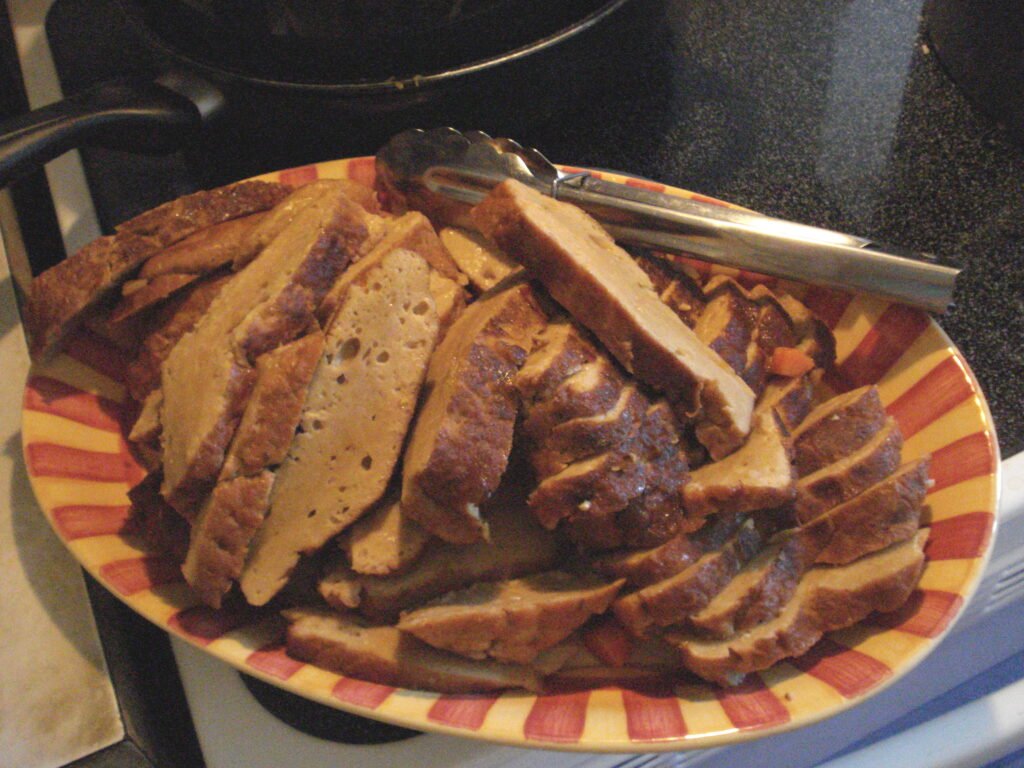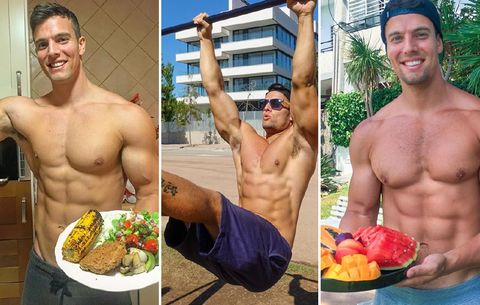Vegans and Vegetarians bodybuilders often concern about their diets, because they may be luck in sufficient protein. But, many experts agree that a well – planned vegetarian or vegan diet can provide you with all the nutrients which you need. Some plant foods can be significantly more protein than others. All higher – protein diets can promote weight loss, satiety and muscle strength. There are many different foods which you can add in your diet due to their protein content if you are vegan or vegetarian.
Plant foods high in protein for Vegans and Vegetarians:
Here is given a list of protein foods that are high in protein for all vegan and vegetarian bodybuilders, who want to have enough intake of protein, so do not doubt to add them in your diet.
- Lentils:
In one cup of cooked lentils (240 ml) there are 18 grams of protein. Lentils are a good source of protein. They can be used in many different dishes, ranging from fresh salads to hearty soups and spice – infused Dal. Also, lentils are rich in slowly digested carbs and in a single cup (240 ml) can provide you approximately 50% of your recommended daily fiber intake.
It has been shown that the type of fiber found in lentils can help to feed the good bacteria in your colon, which is promoting a healthy gut. Also, lentils can help to reduce the risk of diabetes, heart disease, excess body weight and some types of cancer.
- Tofu, tempeh and edamame:
All of the three products are originated from soybeans. Soybeans are considered as a whole source of protein, which means that they can provide your body with all essential amino acids which it needs. The edamame is immature soybean with a sweet and slightly grassy taste, and they need to be steamed or boiled prior to consumption, and they can be eaten on their own or added to soups and salads.
Tofu is made from bean curds that are pressed together in a process similar to a cheese making, while the tempeh is made by cooking and slightly fermenting mature soybeans prior to pressing them into a patty. Tofu does not have much taste, but it easily absorbs the flavor of ingredients that it is prepared with. On the other hand, tempeh has a characteristic nutty flavor. All of the mentioned products have calcium, iron and 10 – 19 grams of protein per 100 grams.
- Seitan:

This is a popular protein source used for many vegans and vegetarians. Seitan is made from gluten, which is the main protein in wheat. It resembles to the look and texture of meat when it is cooked. In 3.5 ounces of seitan, there are about 25 grams of protein. Also, it is a good source of selenium, and it has small amounts of phosphorus, calcium and iron.
- Nutritional yeast:
Nutritional yeast is sold commercially is a yellow powder or flakes, and it is deactivated Saccharomyces cerevisiae yeast. It has a cheesy flavor, and this makes it a popular ingredient in dishes like scrambled tofu and mashed potatoes. The nutritional yeast can be sprinkled on top of pasta dishes, or it can be enjoyed as a savory topping on popcorn. It is a complete source of protein, and it can provide the body with 14 grams of protein and 17 grams of fiber per ounce.
- Chickpeas and most varieties of beans:
Pinto, black, kidney and most other varieties of beans have high amounts of protein per serving. Chickpeas are other legumes that are high in protein. Both chickpeas and beans have about 15 grams of protein per cooked cup (240 ml). Also, they are excellent source of manganese, potassium, phosphorus, folate, iron, fiber, complex carbs and several beneficial plant compounds.
- Hemp seed:
Hemp seed has 10 grams of complete and easily digestible protein per 28 grams. This is 50% more than chia seeds and flaxseeds. You can add the hemp seed to your diet by adding it in your morning muesli or sprinkling in your smoothie. You can also use it for homemade protein bars or salad dressings.
- Spelt and teff:
These two are known as ancient grains. Other ancient grains include farro, sorghum, barley and einkorn. If you do not know, spelt is a type of wheat, and it has gluten. The teff originates from an annual grass, which means that it is gluten – free. Spelt and teff have 10 – 11 grams of protein per cooked cup, which makes them higher in protein than other ancient grains. You can use spelt and teff in many recipes, ranging from baked goods to polenta and risotto.
- Green peas:
This little green pea has often served as a side dish, and it has 9 grams of protein per cooked cup (240 ml), which is slightly more than a cup of milk. A serving of peas covers more than 25% of your daily fiber, manganese, folate, thiamine, vitamin A, vitamin C and vitamin K requirements.
- Chia seeds:
They are native to Mexico and Guatemala. There are 13 grams of fiber per 35 grams and 6 grams of protein per 35 grams, which is a reason why you should add them in your diet. Chia seeds have a bland taste. They are able to absorb water, turning into a gel – like substance. You can add them in a variety of recipes, ranging from smoothies to baked goods and chia puddings.
- Wild race:
It has approximately 1.5 times as much protein as other long – grain rice varieties, including basmati and brown rice. In one cooked cup (240 ml) there is 7 grams protein. Also, there is vitamin B, phosphorus, copper, magnesium and manganese in the wild rice.
- Oats and oatmeal:
If you want to add protein to your diet, then oats are an easy and delicious way to make it. In half a cup of dry oats, there are approximately 6 grams of protein and 4 grams of fiber. Also, it has good amounts of folate, phosphorus, zinc and magnesium. Oats are not considered as a complete protein, but they have higher – quality protein than other commonly consumed grains like rice and wheat.
- Soy milk:
This milk is made from soybeans, and it is fortified with vitamins and minerals. It is a great alternative to cow’s milk. In one cup (240 ml) of soy milk, there are 7 grams of protein. Also, it is an excellent source of Vitamin B12, vitamin D and calcium. You should remember that the soy milk does not have naturally Vitamin B12, so you should pick a fortified variety.
- Protein – rich fruits and vegetables:
All fruits and vegetables have protein, but usually, their amounts are small. Some varieties have more protein than others. Brussels sprouts, sweet potatoes, potatoes, artichokes, asparagus, spinach and broccoli are vegetables that have most protein. In a cooked cup, they have about 4 – 5 grams of protein. They are technically a grain, but the sweet corn is a common food which has about as much as protein as these high – protein vegetables. Generally, fresh fruits have lower protein content than vegetables. Bananas, nectarines, blackberries, mulberries, cherimoyas and guava have about 2 – 4 grams of protein per cup.
- Nuts, nut butter and other seeds:
It is known that nuts, seeds and their derived products have high amounts of protein. In one ounce (28 grams) there are about 5 – 7 grams of protein, which depends on the nut and seed variety. Also, nuts and seeds are great sources of fiber and healthy fats, in addition to vitamin E, certain B vitamins, phosphorus, selenium, magnesium, calcium and iron. Also, they have antioxidants among other beneficial plant compounds. When you choose nuts and seeds to buy, then keep in mind that blanching and roasting can damage the nutrients in nuts, so you should reach for raw and unblanched versions whenever possible.
- Ezekiel bread:
This type of bread is made from organic and sprouted whole grains and legumes. These include spelt, barley, millet and wheat, as well as lentils and soybeans. In two slices of Ezekiel bread, there are approximately 8 grams of protein, which is slightly more than average bread. Sprouting grains and legumes are increasing the amount of healthy nutrients which they contain, and they can reduce the amount of anti – nutrients in them. In some studies, it is shown that sprouting can increase their amino acid content.
Lysine is limiting the amino acid in many plants, and sprouting can increase the lysine content. This can help to boost the overall protein quality. Also, combining grains with legumes can improve the bread’s amino acid profile. Also, sprouting can increase the beta – carotene, vitamin E, vitamin C, folate and soluble fiber content in the bread. It can slightly reduce the gluten content, and this can enhance the digestion in people who are sensitive to gluten.




